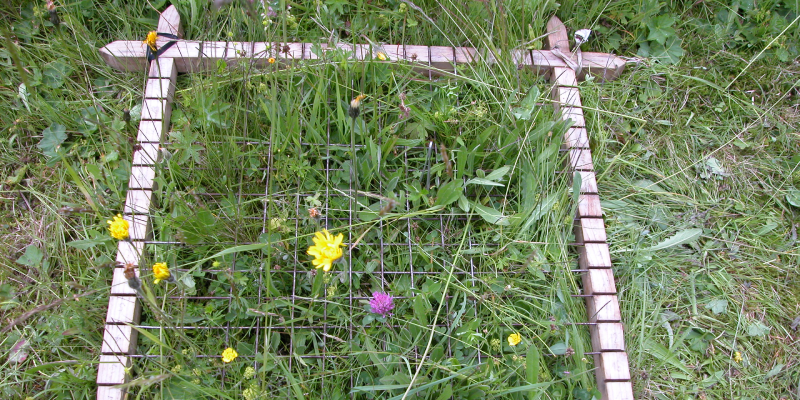
Coexistence in a temperate montane grassland: importance of interspecific trait differences and of environmental variation for plant species coexistence
Tomáš Herben, František Krahulec, Věroslava Hadincová, Sylvie Pecháčková
Several current and former members of our research group have been involved in research of montane grassland dynamics in the Krkonoše Mts. Most of the grasslands in the Krkonoše were created by deforestation and were maintained by mowing or grazing. Along with monocot dominants, these grasslands also host many forb species, including plants of high conservation value (orchids, for example). However, these meadows have been in steady decline due to expulsion of German population after the WW II, and agriculture intensification in the 1970s and 1980s.
Research in the Krkonoše Mts., which has been initiated in the early 1980s, has primarily focused on plant species dynamics and coexistence. For that, a long-term observation of fine-scale dynamics in permanent plots at two study sites has been conducted. Plots of 50 x 50 cm or 30 cm x 30 cm with grid of cells of 3.3 cm x 3.3 cm have been used to record annually shoots of each species rooting in these cells. This observational approach was complemented by removal experiments to evaluate the strength of competitive interactions of the present species. Finally, the data obtained in the field were used to parametrize simulation models to compare field- and simulation-derived species dynamics.
Almost 40 year-long research has indicated that plant species coexistence and thus grassland diversity is likely to be promoted by several, mutually non-exclusive mechanisms:
1) Spatial mobility (and its variation) of the present species
One of the most striking findings was high spatial dynamics (high species turnover) at the finest scale (3.3 x 3.3 cm) despite stability at a larger scale (50 x 50 cm; Herben et al. 1993). Such a dynamics is linked to clonality of the species and variation in this feature. Differences in spatial mobility (due to differences in a degree the species can spread clonally by rhizomes) likely enhance more efficient use of available space (and of resources), and thus also plant species coexistence (Herben et al. 1994).
2) Temporal (environmental) variation and reversals in competitive hierarchies
A removal experiment (when the dominant grass Festuca rubra was removed from some plots and the response of the remaining community was then monitored) initiated in different years showed distinct responses of the community over time. Specifically, the composition of the communities that developed in the removal plots differed in different years, suggesting temporal (environmental) variation in the competitive effects of the dominant grass (Herben et al. 2003). Environmental variation was also the reason for the observation of reversals in competitive hierarchies. Analysis of the long-term observational data suggested that there are no permanent winners of the competitive interactions: a species A can be a winner when it interacts with species B in one year, but a loser in another year (Herben et al. 1997). This temporal (environmental) context dependence in thus another important mechanism promoting coexistence in the study system.
Herben, T., Krahulec, F., Hadincová, V. & Kovářová, M. (1993) Small-scale spatial dynamics of plant species in a grassland community over six years. Journal of Vegetation Science 4: 171-178.
Herben, T., Krahulec, F., Hadincová, V. & Pecháčková, S. (1994) Is a grassland community composed of coexisting species with low and high spatial mobility?. Folia Geobotanica & Phytotaxonomica 29: 459–468.
Herben, T., Krahulec, F., Hadincová, V., Pecháčková, S. & Kovářová, M. (1997) Fine-scale spatio-temporal patterns in a mountain grassland: do species replace each other in a regular fashion? Journal of Vegetation Science 8: 217-224.
Herben, T., Krahulec, F., Hadincová, V., Pecháčková, S. & Wildová, R. (2003) Year-to-year variation in plant competition in a mountain grassland. Journal of Ecology 91: 103-113.

